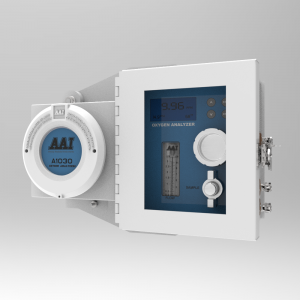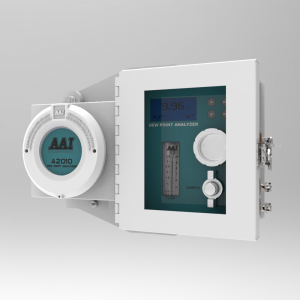The structure of the zirconia sensor is that a zirconia film is sandwiched between two Pt electrodes. The oxygen ions in the zirconia can move freely at high temperatures (above 700°C), and can conduct oxygen ions but not. When the oxygen concentration on both sides of the zirconia film is different, a voltage is generated between the two electrodes, and the voltage is proportional to the logarithm of the oxygen concentration. Therefore, the zirconia sensor detects the difference in oxygen concentration on both sides of the zirconia film. When detecting the oxygen concentration in an unknown gas, the other side of the zirconia film needs to be a gas with a known oxygen concentration, that is, the reference gas. The reference gas of the ordinary zirconia sensor is air. It can be seen that the zirconia sensor is more suitable for detecting gases with an oxygen concentration close to air. When detecting 1ppm gas, the concentration difference is more than 200,000 times. It is very difficult to accurately detect and needs to be calibrated frequently. It is best to use standard gas calibration before each detection. The advantage of the zirconia sensor is that it has a fast response time and can measure the oxygen concentration at high temperature, high pressure, and low pressure, such as boiler exhaust. Exposure to the air or storage in the air will not affect its performance, so the operation is convenient.
The disadvantage of the zirconia sensor is that it is not suitable for detecting substances that decompose or react with oxygen at high temperatures, such as organic solvents and hydrogen, and is not suitable for detecting ppm-level oxygen. Zirconia sensors need to work at high temperatures. When the detection gas contains organic solvents, the organic solvents will produce chemical changes (decomposition) on the electrodes, resulting in some problems: 1) affect the performance of the electrode and cause zero drift; 2) affect the sensor Life; 3) At high temperature, the oxygen in the detection gas will react with organic matter and be consumed, making the value of the oxygen detection lower than the actual value.
The zirconium oxide sensor does not consume the material on the sensor during the detection process. Theoretically speaking, the life of the zirconium oxide sensor is relatively long, but the metal atoms of the metal electrode will diffuse into the zirconium oxide film at high temperatures, which reduces the electrical insulation performance Therefore, the detection value will be deviated and the sensor will fail. Once it fails, the entire probe can only be replaced, which is very expensive.
Advantages: 1. Fast response time
2. It can be used to detect high temperature gas
3. It can be stored in the air and is easy to use
shortcoming:
1. Not suitable for detecting gases containing organic solvents
2. The zero point is easy to drift. When measuring ppm gas, it is necessary to frequently use standard gas calibration
3. Only the entire probe can be replaced, and the replacement cost is high
The zirconia sensor is an instrument composed of zirconia (ZrO2) and a sheath. There are two types of zirconia sensors: heated and non-heated. The heated oxygen sensor has a heating rod in the middle of the zirconium tube. The zirconium tube is made of ceramic and fixed in a fixed sleeve with mounting threads. The exhaust is inserted into the exhaust pipe, and its inner surface is in communication with the air, and its outer surface is in communication with the exhaust gas. The inner and outer surfaces of the zirconium tube are covered with a porous platinum film as electrodes. In order to prevent the exhaust gas from corroding the platinum film, a porous ceramic layer is covered on the platinum film on the outer surface of the zirconium tube, and there is a protective sleeve. There are notches or holes on the top. The terminal of the zirconium oxide sensor has a metal sheath with a hole on it to make the inner surface of the zirconium tube communicate with air, and the wire leads the platinum electrode on the inner surface of the zirconium tube from the sensor through an insulating sleeve.
Oxygen sensor
Denso oxygen sensor
Bosch oxygen sensor




